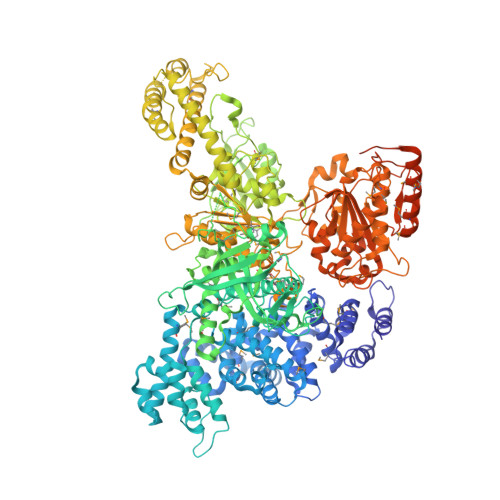The RNA helicase Aquarius exhibits structural adaptations mediating its recruitment to spliceosomes.
De, I., Bessonov, S., Hofele, R., Dos Santos, K., Will, C.L., Urlaub, H., Luhrmann, R., Pena, V.(2015) Nat Struct Mol Biol 22: 138-144
- PubMed: 25599396
- DOI: https://doi.org/10.1038/nsmb.2951
- Primary Citation of Related Structures:
4PJ3 - PubMed Abstract:
Aquarius is a multifunctional putative RNA helicase that binds precursor-mRNA introns at a defined position. Here we report the crystal structure of human Aquarius, revealing a central RNA helicase core and several unique accessory domains, including an ARM-repeat domain. We show that Aquarius is integrated into spliceosomes as part of a pentameric intron-binding complex (IBC) that, together with the ARM domain, cross-links to U2 snRNP proteins within activated spliceosomes; this suggests that the latter aid in positioning Aquarius on the intron. Aquarius's ARM domain is essential for IBC formation, thus indicating that it has a key protein-protein-scaffolding role. Finally, we provide evidence that Aquarius is required for efficient precursor-mRNA splicing in vitro. Our findings highlight the remarkable structural adaptations of a helicase to achieve position-specific recruitment to a ribonucleoprotein complex and reveal a new building block of the human spliceosome.
- Macromolecular Crystallography, Max Planck Institute for Biophysical Chemistry, Göttingen, Germany.
Organizational Affiliation:



















